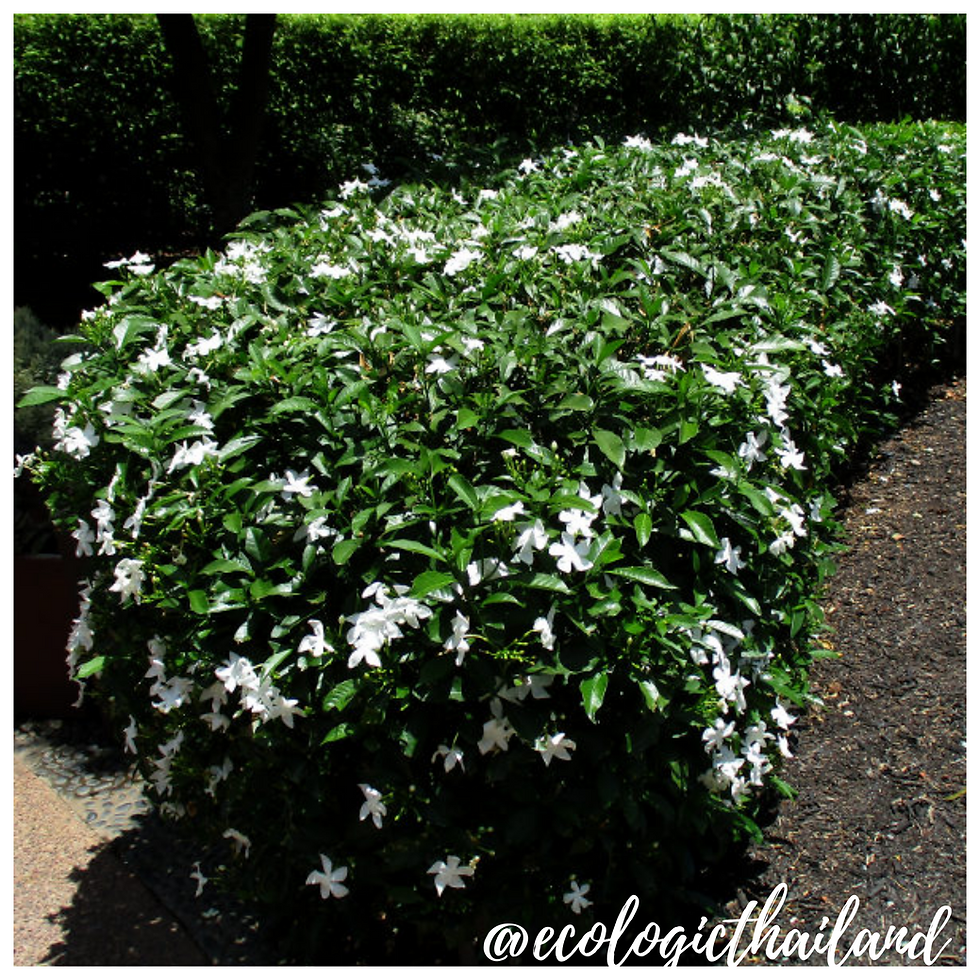Arrowleaf Elephant Ear | American Taro
- Eco-Logic Resort
- Jan 19, 2021
- 2 min read
Kradad | กระดาด | Xanthosoma sagittifolium
Family: Araceae - Genus: Xanthosoma

You will find the Arrowleaf plant near the bungalows of Eco-Logic Thailand, around the restaurant and near the school of TCDF.
The Arrowleaf Elephant Ear or American Taro a robust, herbaceous plant tropical flowering plant. The name of the plant comes from the visual resemblance of the leaf to an elephant's ear.
The plant has a growing cycle of 9 to 11 months, during which time it produces a large stem called a bulbo tuber, surrounded by smaller edible tubers about the size of potatoes.
The tubers are edible, as well as young leaves
They are planted and harvested as needed. Cormels can be removed individually or the entire plant can be uprooted.

THE PLANT
The Arrowleaf Elephant Ear is a robust, herbaceous plant with a short stem with large leaves.
It can reach a height of 1.3 - 2.5 meters.

THE LEAVES
The leaves are 80-160 centimeter long, arrowhead-shaped, green, poorly waxy,

THE FLOWERS
Flowering is rare for the Arrowhead Elephant's Ear.
Flower is a greenish-white spathe enclosing a white or pale yellow spadix.

THE TUBERS
The Elephant's Ear produces a large stem called a bulbo tuber, surrounded by smaller edible tubers about the size of potatoes. These tubers are rich in starch.
The flask-shaped tubers are usually up to 15 - 25 centimeter long.
CULINARY USES
All parts of the plant contain calcium oxalate crystals. This substance is toxic fresh and, if eaten, makes the mouth, tongue and throat feel as if hundreds of small needles are digging in to them. However, this is easily broken down either by thoroughly cooking the plant or by fully drying it and, in either of these states, it is safe to eat the plant.
The tubers of the Elephant's Ear's taste has been described as earthy and nutty, and they can be an ingredient in soups and stews. They may also be eaten grilled, fried, or puréed.
The dried and peeled tuber can be ground into a flour.
The young, unfurled leaves of some varieties can be eaten as boiled leafy vegetables, like spinach.
NUTRITION
The tubers are rich in carbohydrates, calcium, iron, and phosphorus.
They are mostly starch.
The nutritional value of the leaves is considered to be comparable to spinach,.
TRADITIONAL MEDICINAL USE OF NEEDLE FLOWER
NOTE: please take advice from a doctor if you are planning to use herbal medicine.
The Arrowhead Elephant's Ear is said to be used to prevent and treat bone diseases, such as osteoporosis.
All parts of the plant contain calcium oxalate crystals. This substance is toxic fresh and, if eaten, makes the mouth, tongue and throat feel as if hundreds of small needles are digging in to them. However, this is easily broken down either by thoroughly cooking the plant or by fully drying it and, in either of these states, it is safe to eat the plant.
INTO THE WILD: a down to earth experience

For guests and visitors to Paksong we organize weekly tours "The Edible Forest" and Foraging weekends: Into the Wild. We work with local guides to take you in the jungle of Paksong. After foraging, we will cook a meal with the ingredients, using bamboo together with you!
Come and join and learn about the abundance of food that nature gives us!
INTO THE WILD!


















Comments